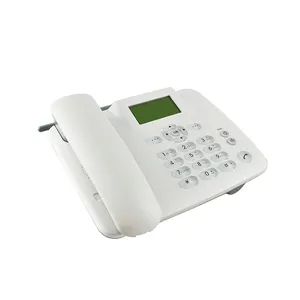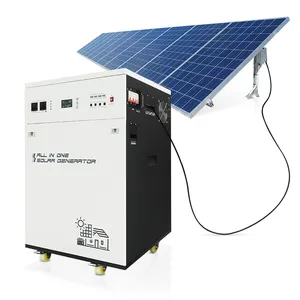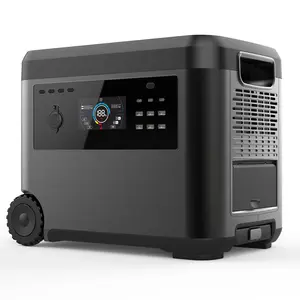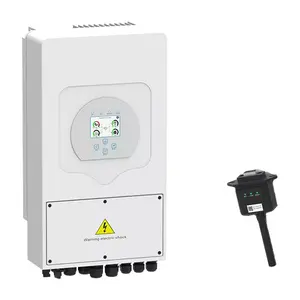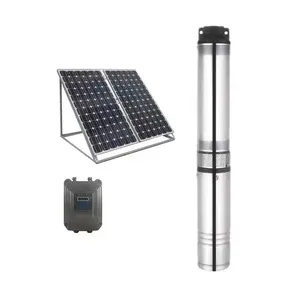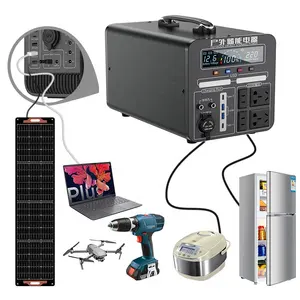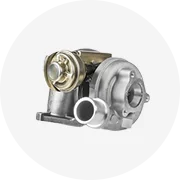ได้รับความนิยมในอุตสาหกรรมของคุณ






Yangtze 12โวลต์7Ah 8Ah 9Ah 9Ah 10Ah ปิดผนึกตะกั่วกรดแบบชาร์จไฟแบตเตอรี่เก็บพลังงานแสงอาทิตย์
฿185.18 - ฿222.21
การสั่งซื้อขั้นต่ำ: 1 หน่วย







ที่ขายดีที่สุด12โวลต์7ah 12ah 20ah 30ah 50ah แบตเตอรี่ลิเธียมไอออน12โวลต์20ah LIFEPO4แบตเตอรี่แพ็ค
฿666.63 - ฿5,555.23
การสั่งซื้อขั้นต่ำ: 1 ชิ้น







12V Lifepo4 แบตเตอรี่ 12.8V 7Ah 10Ah 20Ah 40Ah 50Ah 100Ah 150Ah 200Ah 300Ah 400Ah แบตเตอรี่ลิเธียมไอออน
฿629.60 - ฿24,443.00
การสั่งซื้อขั้นต่ำ: 2 ชิ้น
การจัดส่งต่อชิ้น: ฿5,555.23

- 10%






วงจรลึก BMS 7ah รอบลึก Lifepo4 10A 12ah 18ah 40ah ราคาโรงงานแบตเตอรี่ลิเธียมไอออน12V 50ah Ups 80ah แบตเตอรี่กับ100ah สมดุล
พร้อมส่ง
฿366.65 - ฿466.64
การสั่งซื้อขั้นต่ำ: 2 ชิ้น
การจัดส่งต่อชิ้น: ฿1,240.67




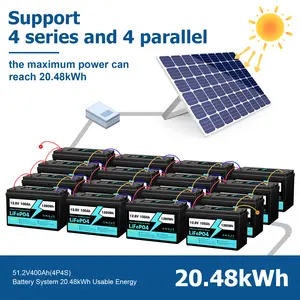

แบตเตอรี่ลิเธียมไอออน Lifepo4แบตเตอรี่เก็บพลังงานแสงอาทิตย์สำหรับ100AH RV Marine 12V
฿3,666.45 - ฿4,407.15
การสั่งซื้อขั้นต่ำ: 100 ชิ้น







Lifepo4แบตเตอรี่12v1000Ah ลิเธียมไอออนแบตเตอรี่ผู้ผลิตแบตเตอรี่ลิเธียมพลังงานแสงอาทิตย์สำหรับ/ตั้งแคมป์/รถกอล์ฟ RV/ทะเล/พลังงานแสงอาทิตย์/UPS
฿85,143.10
การสั่งซื้อขั้นต่ำ: 1 กิโลกรัม






แบตเตอรี่ลิเธียมสำหรับเก็บพลังงาน12V1000Ah แบตเตอรี่200ah 12.8V LiFePO4แบตเตอรี่สำหรับสถานีพลังงานบ้าน
฿63,181.44 - ฿63,922.14
การสั่งซื้อขั้นต่ำ: 9 ชิ้น






แบตเตอรี่ฟรีตะกั่วกรด VRLA 2v1000การบำรุงรักษารอบลึกของ neata
฿5,032.30 - ฿6,621.09
การสั่งซื้อขั้นต่ำ: 10 ชิ้น






อะไหล่แบตเตอรี่ลิเธียม100AH 12.8V LFP SLA เกรด
฿7,555.11 - ฿7,888.43
การสั่งซื้อขั้นต่ำ: 2 ชิ้น
การจัดส่งต่อชิ้น: ฿1,086.24












GEBEN 12V1000A LiFePo4 แบตเตอรี่ 12v 50AH 100Ah 200Ah 400Ah บลูทูธ IP65 กันน้ําแผ่นความร้อนปรับแต่ง
฿58,774.30 - ฿70,143.99
การสั่งซื้อขั้นต่ำ: 1 ชิ้น






GEBEN 12V1000A lifepo4 แบตเตอรี่ 12V 1000Ah 100Ah 200Ah 300 Ah แบตเตอรี่ลิเธียมไอออน Lifepo4 สําหรับเรือแพ็คเก็บพลังงานแสงอาทิตย์
฿58,774.30 - ฿70,143.99
การสั่งซื้อขั้นต่ำ: 1 ชิ้น
การค้นหาที่เกี่ยวข้อง:
12v150ah แบตเตอรี่พลังงานแสงอาทิตย์12v120ah แบตเตอรี่พลังงานแสงอาทิตย์12v230ah แบตเตอรี่พลังงานแสงอาทิตย์12v50ah แบตเตอรี่พลังงานแสงอาทิตย์12v250ah แบตเตอรี่พลังงานแสงอาทิตย์ slaแบตเตอรี่พลังงานแสงอาทิตย์12v 16ah12v5ah แบตเตอรี่พลังงานแสงอาทิตย์แบตเตอรี่พลังงานแสงอาทิตย์12v 65ahแบตเตอรี่พลังงานแสงอาทิตย์12v 260ahราคาของแบตเตอรี่พลังงานแสงอาทิตย์12v 300ah12v150ah แบตเตอรี่พลังงานแสงอาทิตย์แบตเตอรี่พลังงานแสงอาทิตย์12v 80ah12v20ah แบตเตอรี่พลังงานแสงอาทิตย์ราคาแบตเตอรี่พลังงานแสงอาทิตย์12v180ahแบตเตอรี่พลังงานแสงอาทิตย์12v 400ah






GEBEN 12V1000A แบตเตอรี่ลิเธียม rv 100ah 150ah 300ah lifepo4 เก็บพลังงานแบตเตอรี่ 12v 200ah แบตเตอรี่ลิเธียมพลังงานแสงอาทิตย์แบตเตอรี่
฿58,774.30 - ฿70,143.99
การสั่งซื้อขั้นต่ำ: 1 ชิ้น






GEBEN 12V1000A 48v lifepo4 แบตเตอรี่ลิเธียมเหล็กฟอสเฟต lifepo4 12v 24v 48v 200ah พลังงานแสงอาทิตย์แบตเตอรี่ลิเธียมไอออน
฿58,774.30 - ฿70,143.99
การสั่งซื้อขั้นต่ำ: 1 ชิ้น












หมวดหมู่ยอดนิยม
เกี่ยวกับ 12v1000ah แบตเตอรี่พลังงานแสงอาทิตย์
เทคโนโลยีกำลังเปลี่ยนแปลงวิถีชีวิตประจำวันของผู้คน ดังนั้นเชื่อถือได้ 12v1000ah แบตเตอรี่พลังงานแสงอาทิตย์ ใน Alibaba.com ช่วยเพิ่มความทนทานให้กับอุปกรณ์ที่ต้องการกำลังขับที่ดีกว่า รุ่นต่างๆมีข้อกำหนดที่แตกต่างกันเพื่อให้ตรงกับคำแนะนำของซัพพลายเออร์ ทนทาน 12v1000ah แบตเตอรี่พลังงานแสงอาทิตย์ ควรค้นหาได้อย่างรวดเร็วและเปลี่ยนได้ง่าย ด้วยวัสดุการผลิตที่หลากหลายจึงมีตัวเลือกที่ดีกว่าเมื่อซื้อมาใช้งาน
เนื่องจากความก้าวหน้าทางเทคโนโลยีทำให้เครื่องใช้ไฟฟ้าจำนวนมากจำเป็นต้องมีแหล่งจ่ายไฟที่สม่ำเสมอ เชื่อถือได้. 12v1000ah แบตเตอรี่พลังงานแสงอาทิตย์ ควรอยู่ได้นานกว่าเครื่องใช้โฮสต์เพื่อการบริการที่ดีขึ้น ผลิตภัณฑ์ช่วยเหลือเหล่านี้เข้ากันได้กับส่วนประกอบลิเธียมและกรดตะกั่ว ดังนั้นความเข้ากันได้ระหว่างเครื่องใช้ไฟฟ้าและอุปกรณ์ช่วยเหลือจึงมีความเกี่ยวข้องอย่างมาก
ไม่ว่าจะเป็นเครื่องใช้ในบ้านที่อยู่กับที่หรือพาวเวอร์แบงค์พกพาแบบชาร์จไฟได้ ส่วน 12v1000ah แบตเตอรี่พลังงานแสงอาทิตย์ ใน Alibaba.com ช่วยให้แน่ใจว่าพวกเขาให้บริการที่ดีที่สุดแก่ผู้ใช้ ผลิตภัณฑ์เหล่านี้สามารถทนความร้อนสูงและการกัดกร่อนได้ อายุการใช้งานยาวนานให้บริการที่ดีขึ้นก่อนที่จะต้องเปลี่ยน อีกครั้งสถานที่จัดเก็บควรอยู่ในสภาพสมบูรณ์เพื่อลดการกระแทกและความเสียหายอย่างหนัก นอกจากนี้ยังมาพร้อมกับสายเชื่อมต่อเพื่อการบริการที่ดียิ่งขึ้น
สำหรับความต้องการพลังงานขนาดใหญ่เช่นรถสามล้อและเครื่องดนตรีดิจิตอล 12v1000ah แบตเตอรี่พลังงานแสงอาทิตย์ ให้การสนับสนุนทางการเงิน Alibaba.com นำเสนอแพลตฟอร์มสำหรับความน่าเชื่อถือเมื่อทำการซื้อ ผู้ขายทั่วโลกจำนวนมากส่งมอบผลิตภัณฑ์ภายในระยะเวลาที่เหมาะสมเพื่อความสะดวกสบายของลูกค้า เลื่อนดูแคตตาล็อกสำหรับอุปกรณ์ที่เข้ากันได้มากที่สุดและข้อตกลงทางการเงิน
เนื่องจากความก้าวหน้าทางเทคโนโลยีทำให้เครื่องใช้ไฟฟ้าจำนวนมากจำเป็นต้องมีแหล่งจ่ายไฟที่สม่ำเสมอ เชื่อถือได้. 12v1000ah แบตเตอรี่พลังงานแสงอาทิตย์ ควรอยู่ได้นานกว่าเครื่องใช้โฮสต์เพื่อการบริการที่ดีขึ้น ผลิตภัณฑ์ช่วยเหลือเหล่านี้เข้ากันได้กับส่วนประกอบลิเธียมและกรดตะกั่ว ดังนั้นความเข้ากันได้ระหว่างเครื่องใช้ไฟฟ้าและอุปกรณ์ช่วยเหลือจึงมีความเกี่ยวข้องอย่างมาก
ไม่ว่าจะเป็นเครื่องใช้ในบ้านที่อยู่กับที่หรือพาวเวอร์แบงค์พกพาแบบชาร์จไฟได้ ส่วน 12v1000ah แบตเตอรี่พลังงานแสงอาทิตย์ ใน Alibaba.com ช่วยให้แน่ใจว่าพวกเขาให้บริการที่ดีที่สุดแก่ผู้ใช้ ผลิตภัณฑ์เหล่านี้สามารถทนความร้อนสูงและการกัดกร่อนได้ อายุการใช้งานยาวนานให้บริการที่ดีขึ้นก่อนที่จะต้องเปลี่ยน อีกครั้งสถานที่จัดเก็บควรอยู่ในสภาพสมบูรณ์เพื่อลดการกระแทกและความเสียหายอย่างหนัก นอกจากนี้ยังมาพร้อมกับสายเชื่อมต่อเพื่อการบริการที่ดียิ่งขึ้น
สำหรับความต้องการพลังงานขนาดใหญ่เช่นรถสามล้อและเครื่องดนตรีดิจิตอล 12v1000ah แบตเตอรี่พลังงานแสงอาทิตย์ ให้การสนับสนุนทางการเงิน Alibaba.com นำเสนอแพลตฟอร์มสำหรับความน่าเชื่อถือเมื่อทำการซื้อ ผู้ขายทั่วโลกจำนวนมากส่งมอบผลิตภัณฑ์ภายในระยะเวลาที่เหมาะสมเพื่อความสะดวกสบายของลูกค้า เลื่อนดูแคตตาล็อกสำหรับอุปกรณ์ที่เข้ากันได้มากที่สุดและข้อตกลงทางการเงิน
